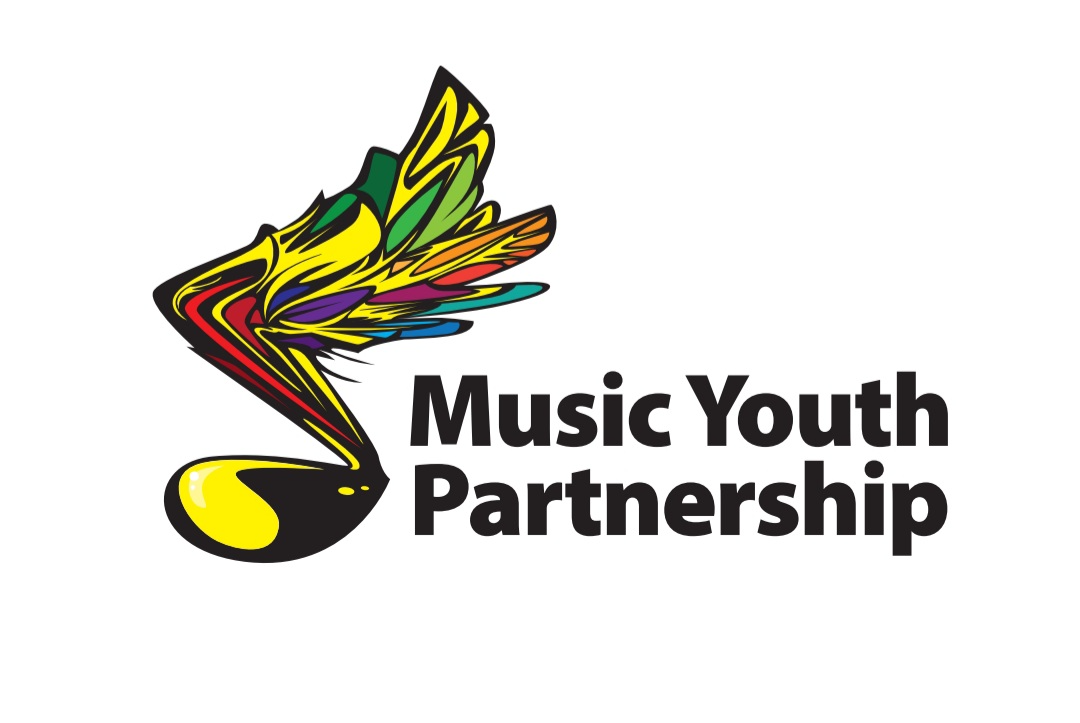By Nancy Summitt, University of Memphis
Reprinted with permission from the May 2016 issue of Segue, the Arkansas Music Educators Journal
Music classrooms have long been a welcoming haven for students with exceptionalities. While students with autism present unique challenges for the music teacher, there has been much research conducted on autism, both in the field of general education and music education. While “one size does not fit all,” these possible solutions may serve as models that can be adapted for students with autism.
Information about Autistic Spectrum Disorders (ASD)
All teachers who have the privilege of interacting with students who are on the spectrum should make sure that they are informed as to what autism is and how the symptoms impact the students and educational environment. Autism results from a neurological disorder that disrupts normal brain functions and is a complex developmental disability. Symptoms include communication delays, repeating words/phrases, not reacting to verbal cues, problems with social interactions, unusual sensitivity to sensory stimulation, inability to deal with change, not making direct eye contact, peculiar repetitive play, and self-stimulation. Currently, 1 out of 150 students in the U.S. has autism and the rates are increasing by 10-17% each year. One of the first things any music teacher should do is to confer with the parents, teachers, and special education professionals of students with autism. Parents and teachers of children on the spectrum will be able to inform music educators as to which learning modality the students typically use, what kind of routine they need, if they have sensitivities, and their current cognitive level.
Instruction and Students with Autism
Students with autism go through an extra layer of decoding when interpreting instruction, which means that they will seem to not understand something as quickly as the other students. Knowing this may enable teachers to be persistent in instructing their students with autism instead of giving up on their ability to achieve. Preparing students for what will be done in classrooms may help students grasp information more quickly – for autistic students, a one-on-one discussion is best. For example, if you are covering a new piece of music, let your students on the spectrum preview it the day before.
As a method of instructing students with autism, the TEACCH program focuses on organized teaching used to expand the independence of children on the spectrum. TEACCH is comprised of four elements: organizing the space for maximum effectiveness, schedules outlining tasks, work systems that show specific expectations for the student at work, and a task organization that clearly states the learning task (Ryan, et al., 2011). For example, if the task is correctly assembling an instrument, the classroom should be consistently set up in such a way that it is easy to get out and assemble the instrument, the student should have a list of instructions for assembly, and there could possibly be pictures showing the correct procedures. Students should be positively rewarded for accomplishing their tasks. Eventually, the student will not need the structure and support.
Students with autism frequently display an affinity for technology. Personal digital assistants (or other devices such as smart phones or iPads) can be used to load a video of a task being performed, pictures of tasks to be performed, audio prompts, or simply to organize schedules (Mechling, Gast, & Seid, 2009). Students on the spectrum have used PDAs to learn a variety of tasks, such as purchasing, food preparation, and dish washing. Students with autism could use a PDA to familiarize themselves with the schedule of a marching contest, for example, or to remind themselves of the correct sequence for putting a reed on a clarinet.
Communication and Students with Autism
One characteristic that impacts autistic students is their introversion. The classroom difficulties that children with autism face often result in students retreating into their inner lives, or their “comfort zone.” While severe disturbance in communication is one of autism’s symptoms, inability to communicate is not the same thing as inability to understand (Guldberg, 2010). Teachers assume that students will be able to verbally express requests or confusion, but verbal communication is sometimes difficult for students with autism. A strategy used to facilitate communication with students on the spectrum is the Picture Exchange Communication System. PECS allows teachers to make pictures with words so that students with autism can communicate non-verbally. In most districts or schools, a special education professional has access to the software (Hourigan & Hourigan, 2009). PECS can be used to visually cue schedules for autistic students, allow them to ask for items (musical instruments, etc.), and express pain or discomfort.
Teachers may need to consider communicating more efficiently during lessons. Choosing specifically what to say and using the least amount of language will help all students, including students on the spectrum. Students with autism may need a little more time to process and respond, so teachers should give them time to think. The use of more non-verbal gestures develops an autistic child’s ability to make eye contact, since they will have to look at the teacher for instructions. Instead of verbally instructing a student to breathe more deeply before singing, the music teacher could use a non-verbal gesture as a reminder.
Social interactions are usually difficult for students on the spectrum, who might show inappropriate emotions, have problems sharing their feelings, and struggle with understanding others’ perspectives. Another reason for the lack of social skills may be that children with autism are paying attention to the wrong details and are interpreting social situations incorrectly (Kokina & Kern, 2010). Students on the spectrum will need specific, point blank instruction in how to interact appropriately with other people. Musical call and response songs are one way to assess this social participation. Games and songs that involve taking turns or one on one interaction are also helpful.
Behavior and Students with Autism
Disruptive classroom behavior by students with autism is caused by their difficulty in dealing with normal classroom expectations, such as sitting still for long periods, completing work on their own, or taking turns with other students. Disruptive behavior may be prompted by loud noises, pain, illness, discomfort, desire for attention, or environmental conditions. It may be useful to have a one-on-one conversation with your students on the spectrum about appropriate classroom behavior and provide a written description (or pictorial representation) of behavior expectations. Students should be given a chance to practice those routines and rules when the rest of the class is not there. Positive reinforcement and positive instructions is sound practice for any student. Reward systems have been shown to be effective; more than likely, the student’s classroom teacher may already have a system in place. Music teachers should discuss any disruptive behavior with the student’s classroom teachers as soon as possible after it happens, because the student’s team may know of strategies that have been proven to work.
While plentiful, short activities work well for most students, students with autism need to be able to anticipate changes in activities. Preparing students for transitions between activities can include signaling a transition with recorded music or verbal cues. Telling students what will happen during the lesson, writing and displaying the lesson plan so the students can see, and using PECS icons to map out the lesson are all ways to help children with autism anticipate transitions.
Another issue that may trigger disruptive behavior is the classroom environment itself. Children on the spectrum are often over sensitive to sensory stimulation such as light and sound, since they may have Sensory Processing Disorder, which often affects children on the spectrum. The sensory system of a child with SPD does not convert information from the outside world correctly; simple motor skills present a challenge, and sensory input may be either sought or avoided. Examples of seeking or creating sensory input include hand flapping, spinning in circles, or making noises. A child avoiding sensory input will be unusually sensitive to ordinary sensory information – textures, noises, etc. – and retreat to the comfort zone. This may result in delayed response to cues, attention difficulties, refusal to participate, problems with movement activities, and difficulty understanding and remembering what is being taught. Students with SPD require time to become accustomed to their environment. Gradual introductions to the environment can be helpful; teachers can try letting students take their time entering the room from the hallway, as long as they are accompanied by an aide. Teachers may also need to turn down music volume, decelerate the lesson pace, let the student take a break with the aide, and increase repetitions. Noise-reducing headphones might be useful for a loud environment like a music class. A symptom of autism that can disrupt a classroom is echolalia, or repeating a phrase over and over. Echolalia is a form of self-stimulation, and is triggered by various factors. Echolalia is a sign that the student is retreating into their comfort zone; sometimes a teacher can re-engage the student into the classroom by beginning the conversation with the topic of the phrase they are repeating, and then moving the dialogue into what is happening in the classroom.
Social stories are a more recently developed technique in which a short story outlines a specific social situation, such as taking turns during a game or how to act in an unfamiliar context (Kokina & Kern, 2010; Okada, Ohtake, & Yanagihara, 2010). Social stories are a means of practicing correct behavior for a setting or event beforehand and should describe positive results for the correct behavior; music teachers may wish to design social stories for correct concert behavior, musical trips, or the transition from a middle school to a junior high ensemble. The social stories should clearly describe the behavior that is incorrect, describe the desired behavior, come from the student’s point of view, use visuals, and use positive expressions. SmartBoards (or smart phones and iPads) can be vehicles for Social Stories. Once a target behavior has been identified and an appropriate Social Story has been developed, the story can be put into a PowerPoint format. Students love seeing their pictures on the big screen; teachers can take pictures of ASD students doing what they are supposed to do and insert those pictures into the PowerPoint presentation. For example, if an autistic student has a tendency to play their instrument while the teacher is giving instructions, the teacher could take a picture of the student sitting still and not playing, write a short 5-10 sentence story about it, and then the student could help the teacher design the Social Story in PowerPoint. This might take some time outside of class, but will enable the student to participate more efficiently during rehearsal.
Conclusion
All students have the right to a well-rounded music education. As music teachers, it is our responsibility to see that we are informed as to the best methods of imparting that instruction to students. The research cited above has enabled me to better understand autistic spectrum disorders. In many cases, general suggestions for students with autism can be modified to suit individual students in the music classroom. The increasing solutions that currently exist can be modified and adapted for the music classroom to make it a welcoming and educational environment for every student.
References
Cammuso, K. (2011). Inclusion of students with autism spectrum disorders. Brown University Child & Adolescent Behavior Letter, 27(11), 1-6.
Cohen, S. (2011). [Commentary on] Providing services to students with autism spectrum disorders. Journal Of Visual Impairment & Blindness, 105(6), 325-329.
Guldberg, K. (2010). Educating children on the autism spectrum: preconditions for inclusion and notions of ‘best autism practice’ in the early years. British Journal Of Special Education, 37(4), 168-174. doi:10.1111/j.1467-8578.2010.00482.x
Hourigan, R., & Hourigan, A. (2009). Teaching music to children with autism: understandings and perspectives. Music Educators Journal, 96(1), 40-45.
Hughes, C., Golas, M., Cosgriff, J., Brigham, N., Edwards, C., & Cashen, K. (2011). Effects of a social skills intervention among high school students with intellectual disabilities and autism and their general education peers. Research & Practice For Persons With Severe Disabilities, 36(1/2), 46-61.
Kokina, A., & Kern, L. (2010). Social Story™ Interventions for students with autism spectrum disorders: a meta-analysis. Journal Of Autism & Developmental Disorders, 40(7), 812-826. doi:10.1007/s10803-009-0931-0
Mechling, L. C., Gast, D. L., & Seid, N. H. (2009). Using a personal digital assistant to increase independent task completion by students with autism spectrum disorder. Journal Of Autism & Developmental Disorders, 39(10), 1420-1434. doi:10.1007/s10803-009-0761-0
Okada, S., Ohtake, Y., & Yanagihara, M. (2010). Improving the manners of a student with autism: the effects of manipulating perspective holders in Social Stories™ – a pilot study. International Journal Of Disability, Development & Education, 57(2), 207-219. doi:10.1080/10349121003750927
Ryan, J. B., Hughes, E. M., Katsiyannis, A., McDaniel, M., & Sprinkle, C. (2011). Research-based educational practices for students with autism spectrum disorders. Teaching Exceptional Children, 43(3), 56-64.
Xin, J. F., & Sutman, F. X. (2011). Using the Smart Board in teaching Social Stories to students with autism. Teaching Exceptional Children, 43(4), 18-24.























